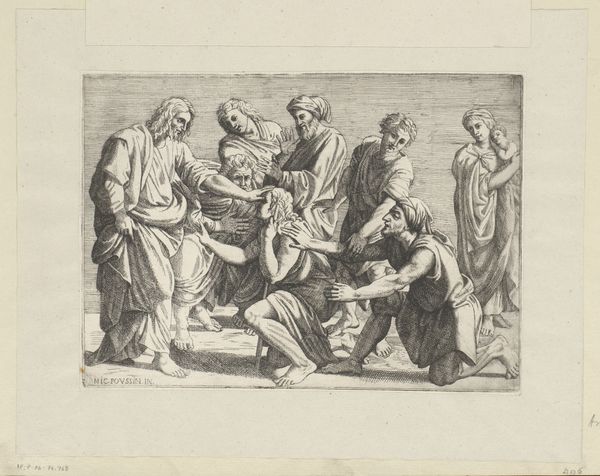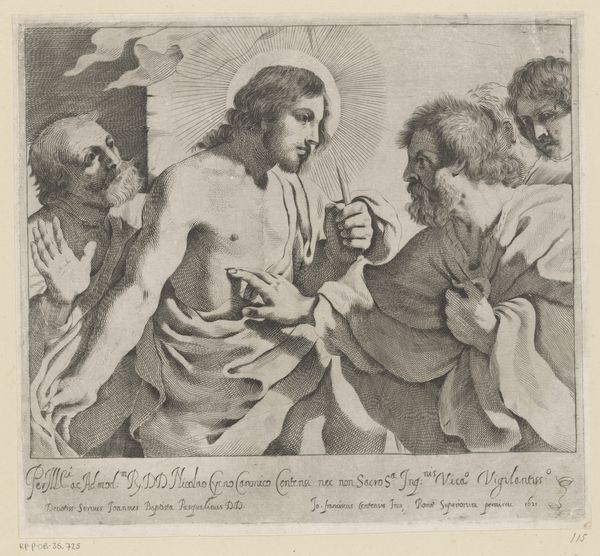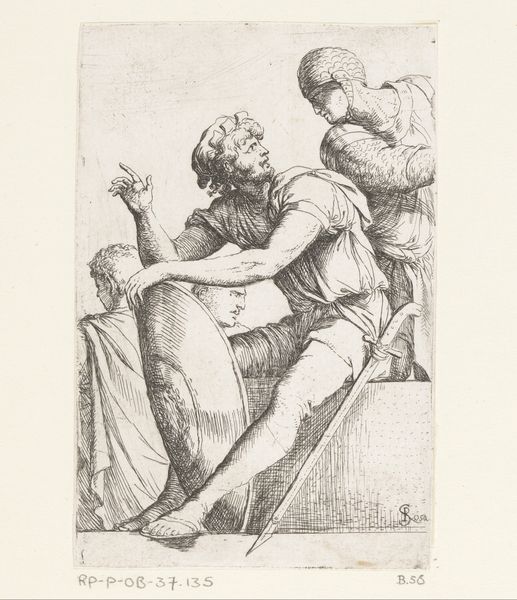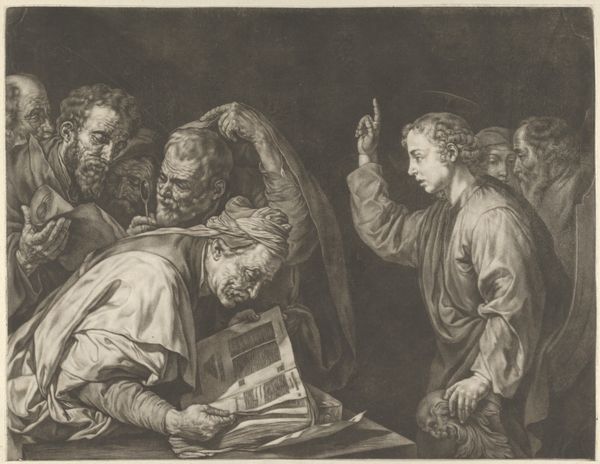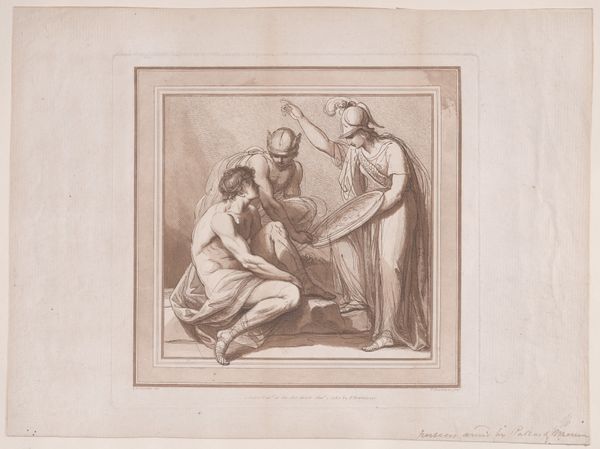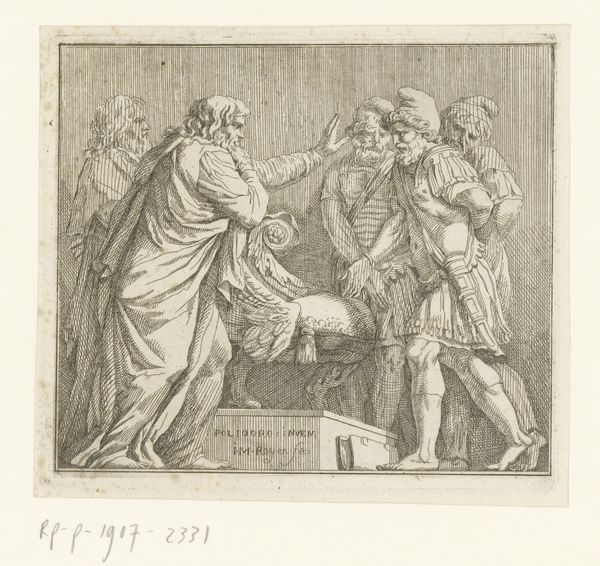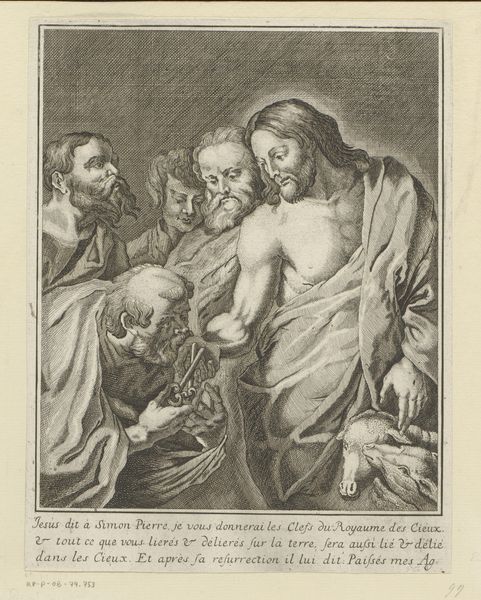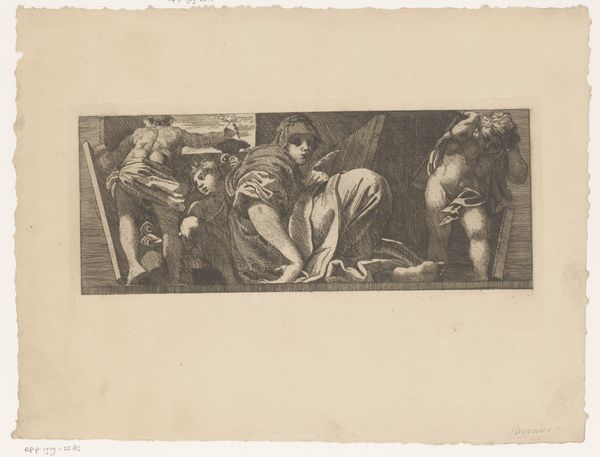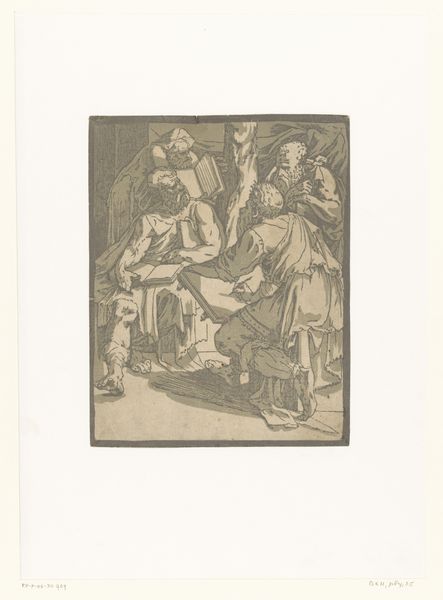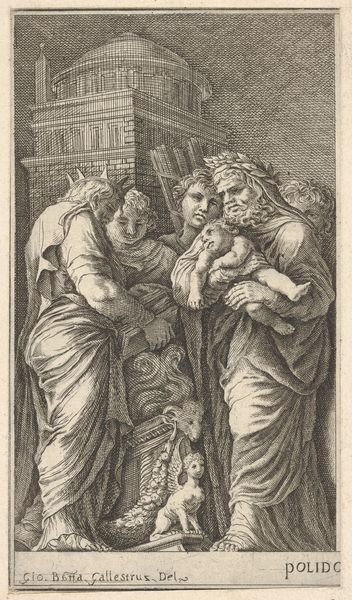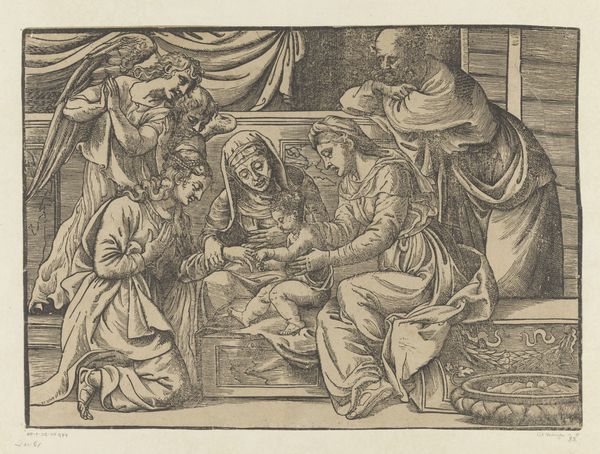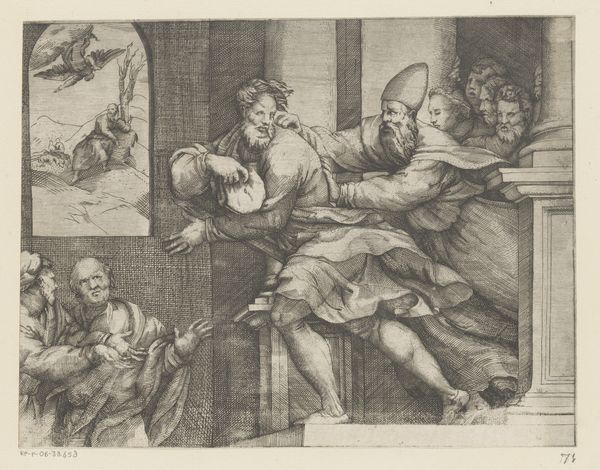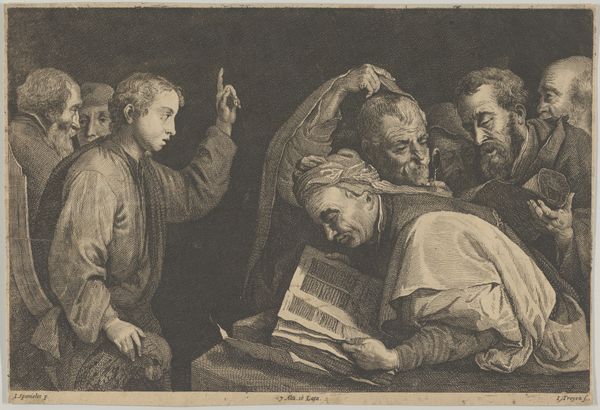
print, engraving
#
baroque
# print
#
old engraving style
#
figuration
#
history-painting
#
engraving
Dimensions: height 221 mm, width 287 mm
Copyright: Rijks Museum: Open Domain
Editor: So, here we have "Ongelovige Thomas", an engraving from around 1650, housed at the Rijksmuseum. The detail achieved through the engraving is stunning; it looks so tactile. What’s your take on this from a material perspective? Curator: This piece provides an incredible opportunity to analyze the intersection of labor, materials, and religious narratives within 17th-century printmaking. Consider the production of this engraving. The engraver's skill was paramount – the labour intensive carving into the copper plate, each line deliberately placed, translated an idea into reproducible form. How does the *materiality* of this print influence how this biblical scene, and belief itself, would be received? Editor: It’s interesting to think about reproducibility, because while paintings often convey the artistic talent of the creator through visible, physical markings and handling of materials, this method disseminates information more widely. So, is this Baroque print then intended for the elite art collector or is it conceived to target the religious masses? Curator: Excellent question. It's likely both, initially reaching wealthier patrons and collectors. The print trade in the Baroque era saw a market that catered to a spectrum of consumers. Further down the production line were affordable, unbound prints bought by the working classes for domestic or devotional settings. How does this commodification, this consumption of imagery, affect the narrative being portrayed, of doubt and belief? Editor: It almost makes it feel like a "product" of faith, accessible and replicable, which changes the intimacy that’s usually implied when someone’s having a moment of doubt. I hadn’t really thought about religious experience that way. Curator: Exactly. Examining the physical print forces us to confront how the very process of making art impacts its message and reach within society. Editor: Thanks. I’ll certainly look at prints differently now. Curator: My pleasure. Keep asking those material questions.
Comments
No comments
Be the first to comment and join the conversation on the ultimate creative platform.
